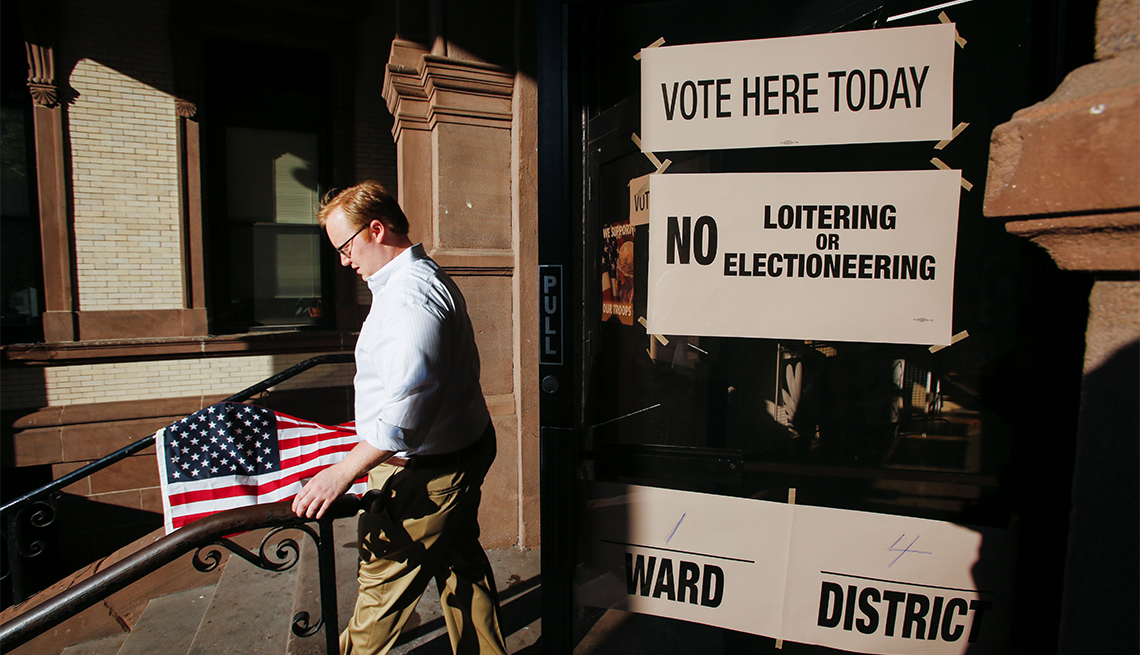Guide to Voting in the 2016 Election
How to register, cast your ballot by mail, find your polling place—and get there!

Eduardo Munoz Alvarez/Getty Images
If you can't make it to the polls on Election Day you may still be able to cast your vote.
En español | U.S. athletes may have won the most gold in the 2016 Olympics, but when it comes to voter turnout in national elections, our country doesn’t come anywhere close to winning a medal.
Voter participation in the U.S. ranks a dismal 31st out of 35 major industrial countries, according to a recent study. In the Obama/Romney race of 2012, just 53.6 percent of the U.S. voting-age population cast ballots. Even in this year’s presidential primaries, only 28.5 percent of Americans roused themselves to pick one of the nominees for the two major parties — a decrease of nearly 2 percentage points from 2008.
But even in a year in which many Americans are unhappy with the choices for the White House, it’s as important as ever for us all to have a say in the country’s direction.
Here’s what you need to know so that you can exercise your right to vote.
Registering to Vote
- If you’ve voted in previous elections and haven’t moved, your name probably is already on the voter registration rolls for your state. But to help you avoid any problems on Election Day, Vote.org offers links to voter registration databases in various states, and the National Association of Secretaries of State provides a list of state election agency phone numbers so you can call and check.
- If you’re a new voter or living in a new place, you’ll need to register or update your records. Deadlines for registration vary across the country. Thirteen states and the District of Columbia require new voters (or ones who’ve moved) to register at least 30 days in advance, while in Connecticut, you can send in your registration form just seven days before the Nov. 8 election. Alaska allows same-day registration in years when there’s a presidential election. There’s also one state, North Dakota, which doesn’t require voters to register, as long as they show up at the polls with a driver’s license or another valid form of identification. To help you find the rules in your state, the federal government has compiled this state-by-state list of registration deadlines.
- In 31 states and the District of Columbia, you can also register online, using one of the links provided by the National Conference of State Legislatures website.
Voting Early or by Mail
- If you’re eager to cast your ballot right away, 37 states and the District of Columbia allow you to vote in person before Election Day, without any special excuse. Vote.org provides this early voting calendar, which includes links to state websites where you can get more detailed information.
- If you won’t be able to make it to the polls on Election Day for whatever reason — because of illness, for example, or because you’re going to be overseas — you may still be able to cast a vote. Oregon mails ballots to voters, who can then mail them back or slip them into drop boxes located around the state. Colorado likewise sends out ballots that can be returned by mail, but you can also show up at a polling place and vote in person. Washington state also sends out ballots but makes things easier with its MyVote website, which allows you to download a replacement ballot if yours got lost in the mail, as well as update your registration info.
- The remaining states allow absentee voting, which essentially means that you have to request a ballot in advance and either mail it back or drop it off in person at an election site. Twenty-seven states and the District of Columbia will issue you an absentee ballot with no questions asked, while 20 other states require you to provide some justification for needing one. The National Conference of State Legislatures and the U.S. Vote Foundation both provide charts with state-by-state absentee voting rules, and the foundation will help you request an absentee ballot from your state.
Finding Your Polling Place
- If you plan to vote in person, the League of Women Voters’ Vote411.org website provides a nationwide polling place locator that you can search, using your home address. Canivote.org provides links to official websites with that information in many of the states.
Getting a Ride on Election Day
- In some places — Minnesota, for example — public transit systems provide free rides to voters on Election Day. Check with your local system for specifics. Local chapters of organizations such as the League of Women Voters sometimes provide volunteer drivers who will pick you up and take you to your polling place. You can also check with the state or local campaign headquarters of your preferred candidate, as some run “get out the vote” efforts to make sure you get to the polls.
Understanding Voter ID Laws
- In 32 states, voters who show up at polling places now are required to present some form of identification. From the League of Women Voters’ Vote411.org, here’s a state-by-state database of ID and other eligibility requirements. If you run into problems on Election Day, the League also offers a hotline (1-866-OUR-VOTE) that you can call for assistance.
